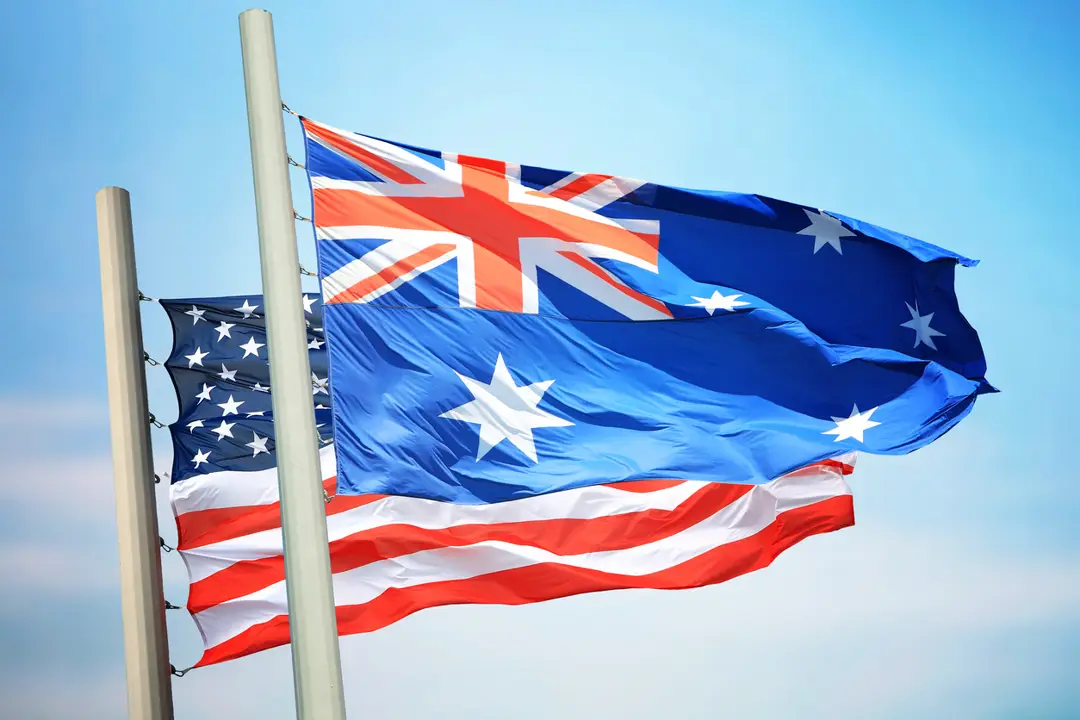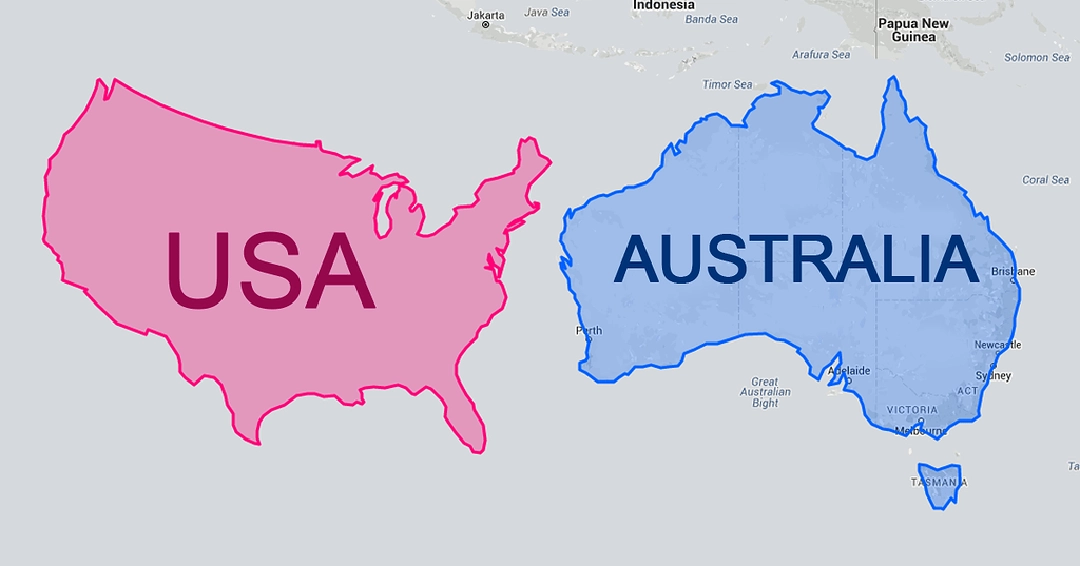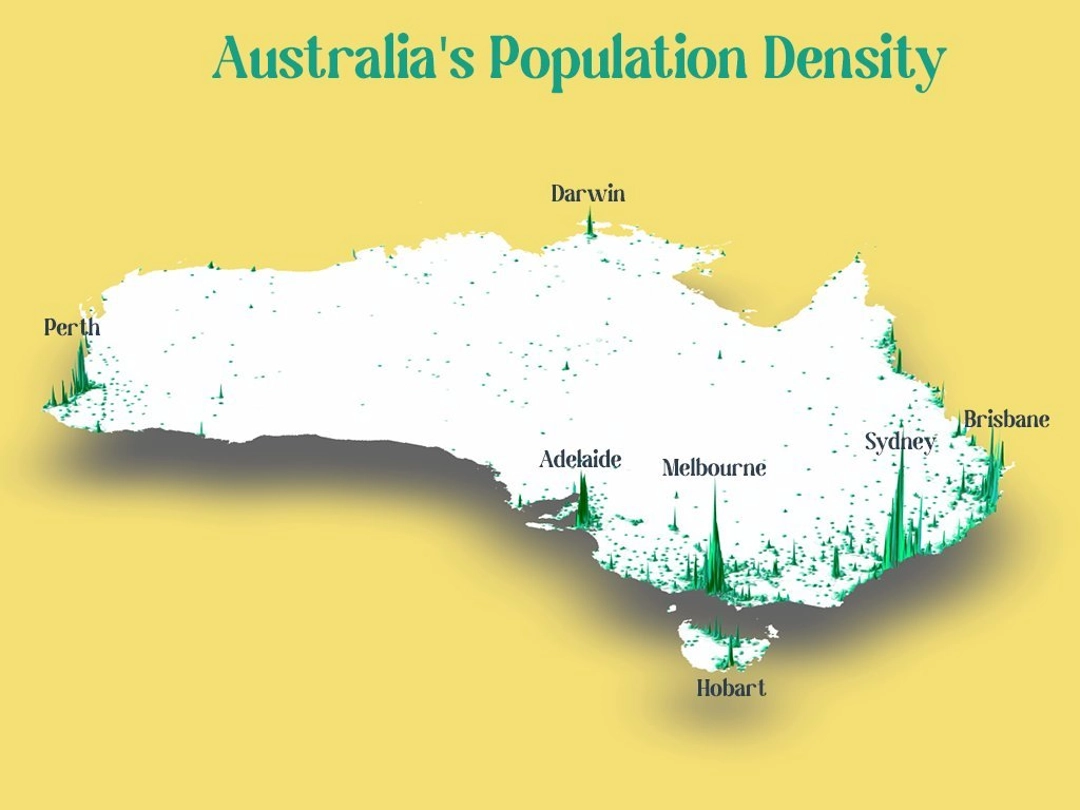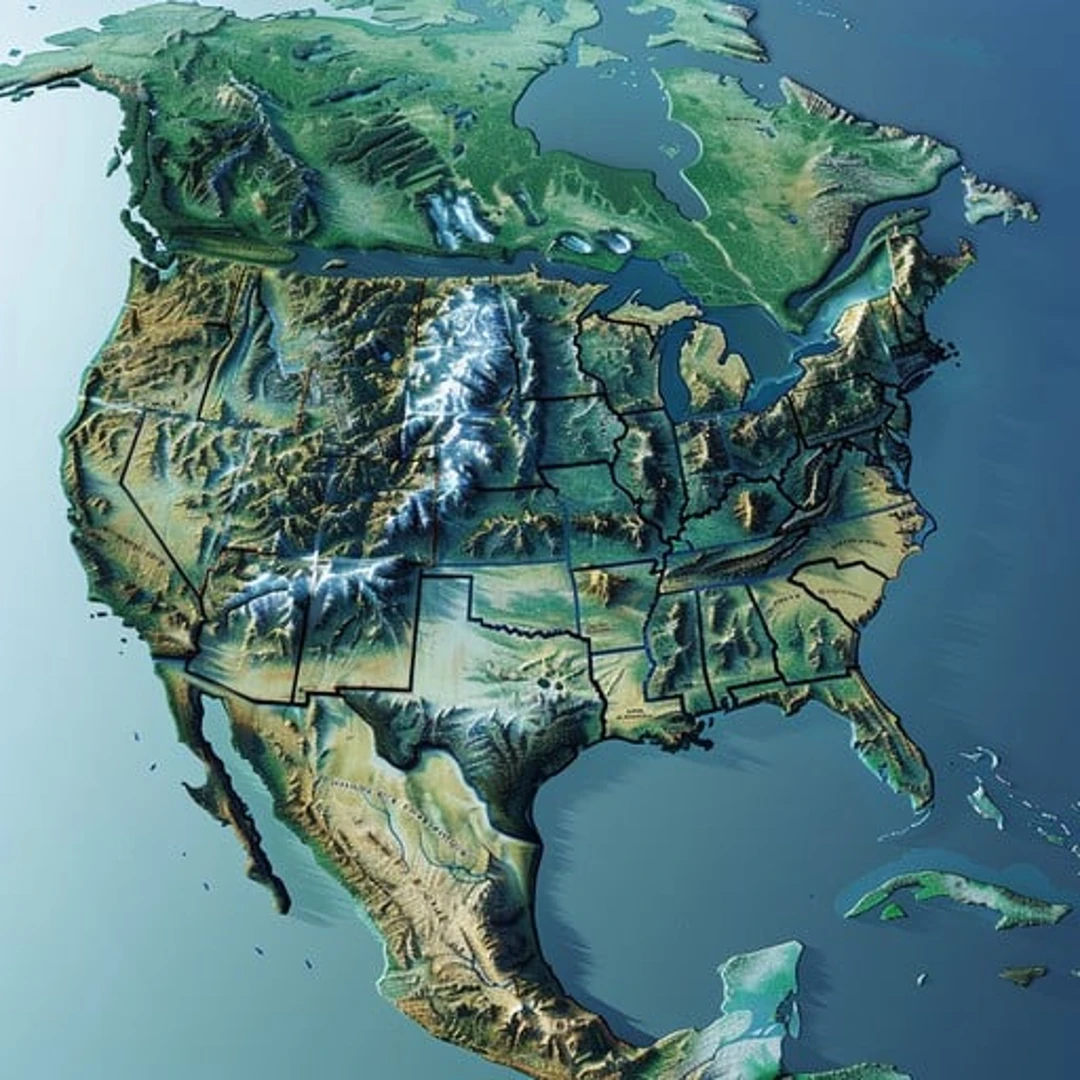When looking at a world map, Australia often seems as vast and sprawling as the United States. That leads many curious travelers to ask: Is Australia actually bigger than the USA?
It’s a fun and surprisingly tricky question—because while size seems like a simple comparison, there’s more to it than just numbers.
In this article, we’ll break down the facts, clear up the confusion, and explore what “big” really means when it comes to these two giant nations.
And when you’re exploring such vast countries, having an iRoamly USA travel eSIM with its variety of packages and fast speeds can be a great travel companion to keep you connected wherever you go.

Is Australia Bigger Than the United States?
Short answer: No, the United States is geographically bigger than Australia.
When you glance at a world map, especially one using the Mercator projection, Australia looks enormous.
It seems as though it’s the size of the United States, or maybe even larger. But when measured by land area, the United States wins hands down.
Let’s break it down:
United States (including Alaska and Hawaii): about 9.83 million square kilometers
Australia: around 7.69 million square kilometers
So, the United States is about 27% greater in size than Australia. It doesn’t sound like a lot but that’s enough to bump up the United States on the list of the world’s largest countries (the U.S. ranks third compared to Australia’s sixth).

Still, Australia isn’t exactly tiny. It’s the largest country in Oceania, the world’s only country that is also a continent, and the biggest country in the Southern Hemisphere.
The open land and wide-open spaces make this seemingly infinite, even though the country is actually smaller.
There are a few reasons why people might think that Australia is bigger but then, Australia is pretty much all landmass and the U.S. has a lot of inland water.
That said, depending on the map you have, Australia’s central location near the equator can make it appear differently sized.
So, while Australia might be big (and seem even bigger as you’re crossing the Outback), in terms of total square area, the United States is bigger.
Population Density and Distribution
While both the United States and Australia are massive, the distribution of people throughout the land is completely different.
The US has a population of more than 330 million, and cities and towns dot the land.
Whether it’s New York or Los Angeles, Chicago or Miami, popular U.S. cities attract millions with their vibrant culture, business hubs, and endless activities. There’s people everywhere and a million places to see and things to do.
Australia is about the size of the contiguous United States, yet has only a population of around 26 million. The vast majority of the country’s population is on the coast, in metropolises such as Sydney, Melbourne, and Brisbane.

The interior, called the Outback, is mostly deserted because the area is very hot and dry.
Population-density-wise, the contrast is night and day. While the United States feels crowded and crammed in most place, Australia is wide open and expansive.
So, while the landmass is the same, how that land is used tells a dramatically different story.
Terrain and Geographic Diversity
In terms of landscapes, both Australia and the United States boast amazing geographical diversity — though accomplished in quite different ways. The USA spans the icy wilderness of Alaska to the tropical paradise of Florida and Hawaii.
In between, you have everything: the huge Rocky Mountains, the expansive Great Plains, the lush forests of the Pacific Northwest, desert land in Arizona and Nevada, the Appalachian Mountains, and huge beaches on both the Atlantic and the Pacific.
This is a place where you can go skiing in Colorado, surfing in California, and hiking in temperate rainforests on the same journey. This variety lets you enjoy the best US weather no matter what you’re after.

Australia, however, is vast in a different way. Much of the country is arid or semi-arid land that locals call “the Outback.” It’s flat, dry, and sparsely populated, yet hauntingly beautiful.
Around the fringes, however, you have a diverse landscape: from the rainforests of Queensland, the tropical Top End in the Northern Territory, dramatic coastal cliffs and white sandy beaches in Western Australia, and alpine country in sections of Victoria and New South Wales.
It might not have the variety of ecosystems that the US has, but what it does have is unique and mostly undisturbed.
Simply, the US just has more climates and types of geography, given its size and varying latitudes. Yet Australia competes admirably, for within its vast confines lies an incredibly varied blend of cultures and natural landscapes.
Whether you’re driving through Utah or Western Australia, you’re treated to a landscape that looks like it’s from another world.
Cultural and Global Influence
The size of a country isn’t just about landmass — it’s also about influence.
With its huge population and economic dominance, the United States has been a superpower for centuries. Its influence — from Hollywood and pop music to technology companies and fast food — extends worldwide.
Whether politically, economically, or culturally, the U.S. looms large in the world.

Australia is a big country with a landmass equal to that of the United States.
The country’s relaxed way of life, beautiful landscapes, and welcoming cities make it a sought-after destination, but it lacks the overseas gravitas of the U.S.
That said, Australia does excel in environmental studies, sports, education, and research. So, for all of Australia’s scale, the USA is truly massive — and not only in landmass but in global impact.
FAQ
1. Can Australia fit inside the United States if laid over a map?
Yes, Australia can indeed fit into the U.S., coat side to coast. If you lay it over the United States, it actually helps you understand the size of both countries.
2. How do time zones between the USA and Australia differ?
Australia has three main time zones and the U.S. has six, including territories, which gives you a sense of just how large both are in the world.
3. Why do geographic size comparisons matter?
Comparing sizes makes you realize the unique things each country has to offer and the truly massive size of each. It’s a nice reminder of their global and geographic diversity.
Conclusion
While Australia is quite large and imparts a unique feel of its own, the US is a bit larger in overall size and offers more variation both in landscape as well as people.
They are both behemoths on the world stage, but with a unique sense of scale and beauty.
Whether you're comparing size, terrain, or travel experience, there's no clear "winner"—just two amazing places to explore.
